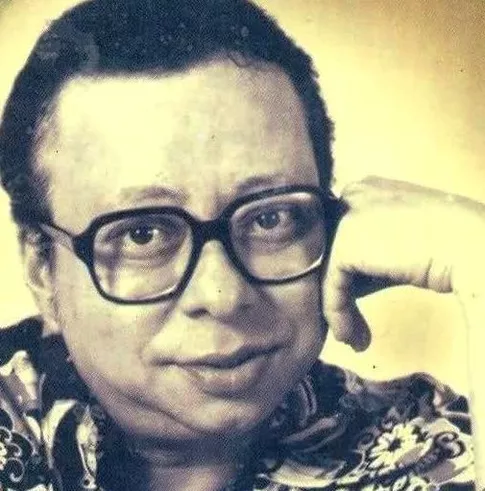
In yesterday’s column I discussed why the State Bank of India(SBI) has launched the FlexiPay home loan. This home loan allows a borrower to borrow up to 120% of what he would have been able to do in the normal scheme of things.
Further, the borrower has the option to pay only interest on the home loan for the first three to five years. The EMI, which will lead to the principal being repaid as well, kicks in only after that.
The question to ask here is, how much will this benefit the borrower. Or is this just a marketing gimmick which the country’s largest bank has come up with in order to issue more home loans. It is clear that SBI wants to give out more home loans, given that they have a very low default rate in comparison to the other kinds of home loans that the bank gives out.
Let’s try and understand whether FlexiPay home loan is a marketing gimmick or does it ‘really’ benefit the borrower. Let’s take the example of a borrower, who in the normal scheme of things, is eligible to take on a loan of Rs 40 lakh. While this number may seem very low to those who live in metropolitan cities, the average home loan given out by HDFC, the largest housing finance company in the country, is around Rs 23.6 lakh. So a home loan amount of Rs 40 lakh is pretty decent by that comparison.
Getting back to the example. Let’s say a borrower is eligible to take on a loan of Rs 40 lakh. In the case of FlexiPay home loan, he will be eligible for a loan of up to Rs 48 lakh (1.2 times Rs 40 lakh). The interest that SBI charges on its home loan is 9.55% (It’s 9.5% for women).
The interest only option of the FlexiPay home loan allows the borrower just to pay interest on the home loan for the first three to five years. As the SBI press release on FlexiPay home loan points out: “Further, to lower the impact of such additional loan amount on monthly repayments in the form of EMIs, the customers availing Home Loan under ‘SBI FlexiPay Home Loan Scheme’ will also be offered the option of paying only interest during the moratorium (pre-EMI) period of 3 to 5 years, and thereafter, pay moderated EMIs.”
The idea, as SBI puts it, is to give the borrower the option to pay a lower amount every month during the initial years. But is this amount really low? Let’s do some maths to understand this point. I had done this in yesterday’s column as well, but on reading it later, I found that the point did not come out as strongly as it should have.
Let’s say the borrower opts for an interest only option for the first five years. He has taken a loan of Rs 48 lakh, as is allowed under the FlexiPay home loan. An interest of 9.55% would amount to a total payment of Rs 4,58,400 during the course of the year.
This means a monthly payment of Rs 38,200 to service the interest on the loan. If the borrower had taken on a normal home loan, he would have got a home loan of Rs 40 lakh. The maximum tenure of an SBI home loan is 30 years. Hence, the EMI on a Rs 40 lakh, 30-year home loan, at an interest rate of 9.55%, would work out to Rs 33,780. This is lower than the monthly payment of Rs 38,200 that needs to be paid as interest on a Rs 48 lakh home loan, if the borrower opts for the interest only option for the first five years.
So there is clearly no moderation in the payment as SBI claims. And that is primarily because the interest to be paid on the FlexiPay home loan is the same as a normal home loan. If the interest were to be lower, then the interest payment would have been lower as well and the moderation claim would have been true to a certain extent. But in that case the bank would have been taking on more risk as well.
Now let’s flip the situation. If the borrower were paying an EMI of Rs 38,200, what is the loan amount he would be able to service. The maximum tenure of an SBI home loan is 30 years. Hence, paying an EMI of Rs 38,200, for a tenure of 30 years, at an interest of 9.55%, the borrower would be able to service a home loan of Rs 45.23 lakh. The EMI for this loan works to around Rs 38,197.
The loan amount of Rs 45.23 lakh is around 5.8% lower than the loan amount of Rs 48 lakh. Hence, is it worth paying only an interest of Rs 38,200 per month for a Rs 48 lakh home loan, when for the same EMI one could get a loan of Rs 45.23 lakh. And that is the question that any borrower should be asking himself.
SBI will not give the borrower a loan of Rs 45.23 lakh under a normal home loan scheme, given the borrower is eligible only for a loan amounting to Rs 40 lakh. But the bank is willing to give a loan of up to Rs 48 lakh under the FlexiPay home loan scheme.
Hence, the borrower should take this opportunity of taking on a higher loan amount of Rs 45.23 lakh, if the need be, under the FlexiPay home loan scheme. But at the same time ensure that he does not opt for the interest only option but repay an EMI. Why do I say that? If the borrower takes on a loan of Rs 48 lakh and opts for the interest only option, he has to pay an interest of Rs 38,200 per month.
Over a period of five years this amounts to Rs 22.92 lakh, close to half the loan he has borrowed. Further, at the end of five years, not a single paisa of the loan amount has been repaid and he has to start repaying the loan. The borrower will have to repay the loan over a period of the next 25 years. For this, he needs to pay an EMI of Rs 42,104 per month, which is 10.2% more.
Now what would have happened if the borrower had opted to pay an EMI of Rs 38,200 per month on a home loan of Rs 45.23 lakh, and repaid it over thirty years. At the end of five years, he would have repaid around Rs 2.03 lakh of the loan already. In the interest only option, not a single paisa would have repaid. Also, it is worth pointing out here that the difference between a loan of Rs 45.23 lakh and Rs 48 lakh is not huge. Further, when a borrower pays an EMI, the principal amount of the EMI is allowed as a deduction under Section 80C of the Income Tax Act. And this deduction will not be available if interest only option is chosen.
What these numbers tell us very clearly is that the FlexiPay home loan looks more like a marketing gimmick to lure in prospective home loan borrowers. The borrowers are better off opting for the EMI option rather than the interest only option.
The column originally appeared on the Vivek Kaul Diary on February 3, 2016

